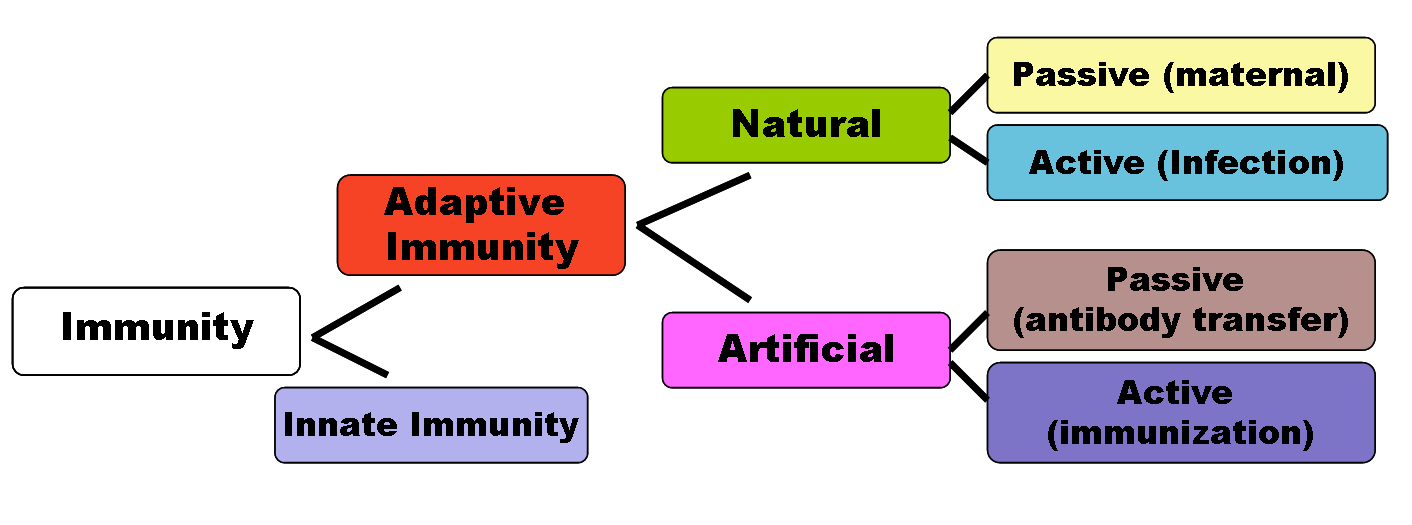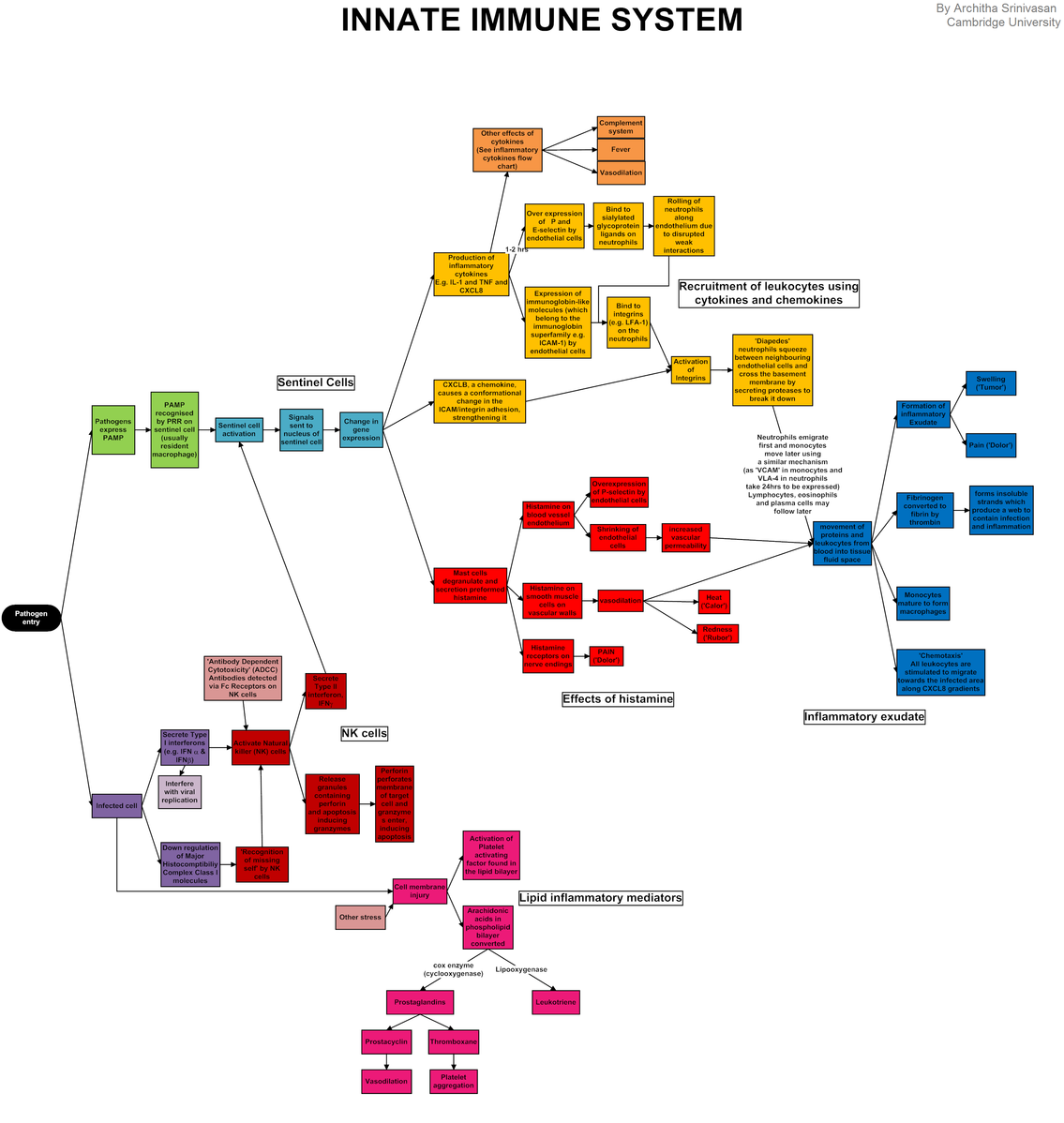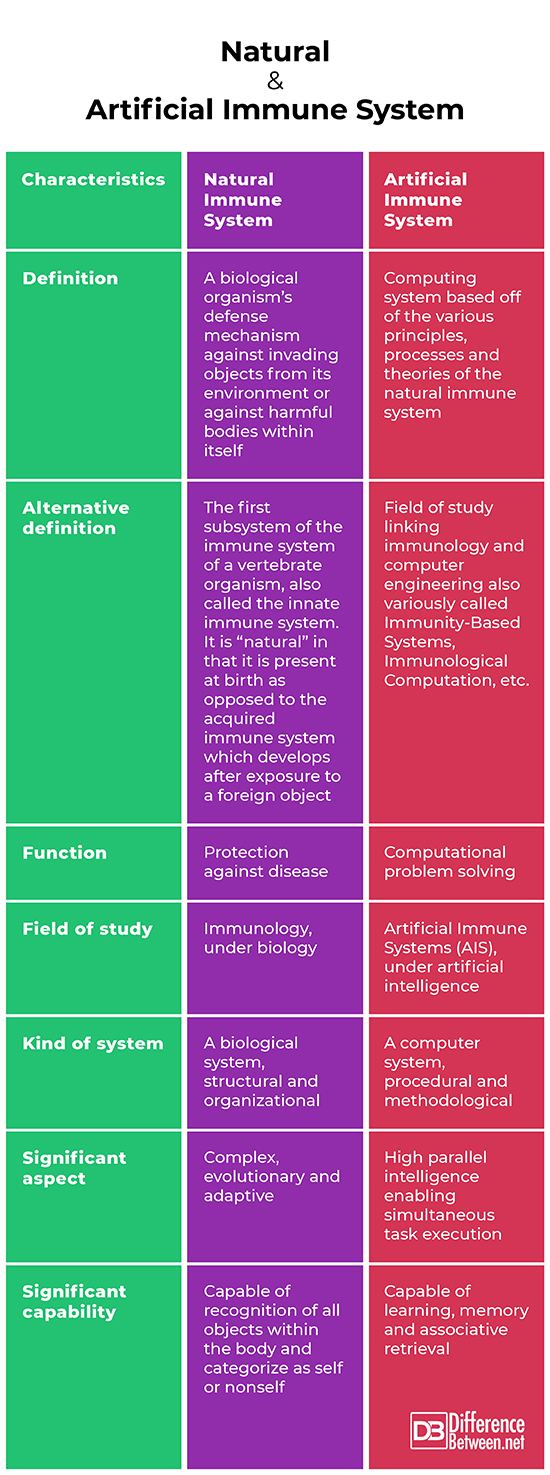Difference Between Natural and Artificial Immune System
Natural immune system and artificial immune system are two terms that one would instinctively assume as subsets of a larger system and maybe as being counterparts of each other. This is not the case, although the two are interrelated. Artificial immune systems are computer systems modeled off of the principles and processes of natural immune systems, as well as from theories about how the immune system works. And although artificial immune systems have a wide array of applications mainly in computer engineering, some artificial immune systems have been developed to aid immunologists in their research of natural immune systems.
Although interrelated, the two terms are largely distinct from each other. To begin with, the word “system” in these two terms mean differently. They are actually different concepts, and from different fields of study. These two terms are defined and differentiated further in the succeeding sections.
What is natural immune system?
A natural immune system is a network of structures and processes within a biological organism whose main function is to protect against invading objects from its environment, such as microorganisms and parasites, or against harmful bodies within itself, such as cancer cells. The term may refer broadly to the overall immune system of all living organisms, but also specifically refers to the first subsystem of the immune system of a vertebrate organism – the innate immune system, which is “natural” in that it is present at birth as opposed to the acquired immune system which develops after exposure to an invading pathogen.
Natural immune systems are biological systems, more of a structural rather than a procedural system, studied in immunology under the broader field of biology. Natural immune systems are complex evolutionary and adaptive systems with various mechanisms, the most important of which is its capability to recognize all cells and molecules within the body and categorize those as self (belongs to the body) or nonself (foreign to the body).
What is artificial immune system?
An artificial immune system, not to be confused with artificial immunity, is any computing system based off of the various principles, processes and theories of the natural immune system. Its main function is computational problem solving in the fields of mathematics, computer engineering and information technology. Alternatively, Artificial Immune Systems refers to the field of study linking immunology and computer engineering for various applications. This field of study is also variously called Immunity-Based Systems, Immunological Computation, and others.
Artificial immune systems are computing systems developed in the similarly named field, and under the overarching field of artificial intelligence. These systems are made up of rules and principles and it is thus more of a procedural or methodological system. From this perspective, the immune system is a highly parallel intelligent system that can split tasks or perform them simultaneously. Important in artificial immune systems is the capability of learning, memory and associative retrieval to recognize and classify and execute tasks.
Difference between Natural and Artificial Immune System
Definition
A natural immune system is a network of structures and processes within a biological organism whose main function is to protect against invading objects from its environment or against harmful bodies within itself. An artificial immune system is a computing system based off of principles, processes and theories of natural immune systems.
Alternative definition
Natural immune system may also refer to the innate immune system which is the first subsystem of the immune system in vertebrate animals. Artificial Immune Systems may also refer to the research field linking immunology and computer software engineering.
Main function
The main function of a natural immune system is protection against disease while the main function of an artificial immune system is computational problem solving.
Field of study
Natural immune systems are studied in immunology, under the broader field of biology. Meanwhile artificial immune systems are in the field of Artificial Immune Systems (AIS), under the overarching field of artificial intelligence.
Kind of system
A natural immune system is a biological system made up of structures and processes working together. It is structural and organizational system. An artificial immune system is a computing system, made up of a set rules and principles. It is a procedural and methodological system.
Significant aspect of the immune system
Natural immune systems are complex, evolutionary and adaptive systems. Artificial immune systems are highly parallel intelligent systems.
Significant capability of the immune system
Natural immune systems emphasize the capability of recognition of all objects within the body and categorizing them as self or nonself. Artificial immune systems emphasize the capability of learning, memory, associative retrieval and simultaneous task execution.
Natural vs Artificial Immune System
Summary
- Natural and artificial immune systems are interrelated terms from different but also interrelated fields of study.
- Natural immune systems are biological systems with structures and processes that act as the defense mechanisms of organisms against foreign and harmful objects.
- Artificial immune systems are computer systems with rules and procedures based from the principles of natural immune systems that enable computational problem solving.
- Difference Between Hematoma and Melanoma - February 9, 2023
- Difference Between Bruising and Necrosis - February 8, 2023
- Difference Between Brain Hematoma and Brain Hemorrhage - February 8, 2023
Search DifferenceBetween.net :
Leave a Response
References :
[0]Image credit: https://en.wikipedia.org/wiki/Immunity_(medical)#/media/File:Immunity.png
[1]Image credit: https://commons.wikimedia.org/wiki/File:Innate_immune_system.png
[2]Dasgupta, Dipankar. "An Overview of Artificial Immune Systems and Their Applications ." In Artificial Immune Systems and Their Applications , by Dipankar Dasgupta, 3-21. Memphis, Tn: Springer-Verlag Berlin Heidelberg, 1999. Print.
[3]Delves, Peter J. "Overview of the Immune System." MSD Manual. May 2019. https://www.msdmanuals.com/home/immune-disorders/biology-of-the-immune-system/overview-of-the-immune-system (accessed October 25, 2019).
[4]Holmes, John H. "Knowledge Discovery in Biomedical Data: Theory and Methods." In Methods in Biomedical Informatics, by Indra Neil Sarkar, 179-240. London, UK: Elsevier Academic Press, 2014. Print.
[5]Zimmermann, Kim Ann. "Immune System: Diseases, Disorders & Function." Live Sciecne. October 17, 2018. https://www.livescience.com/26579-immune-system.html (accessed October 24, 2019).



